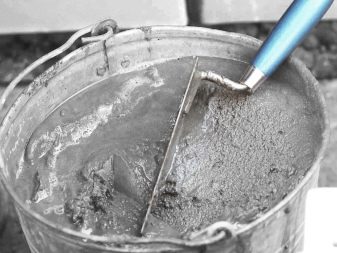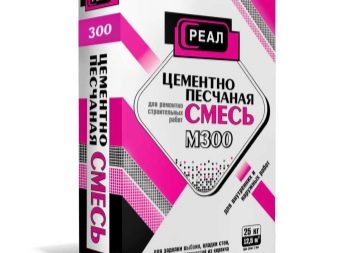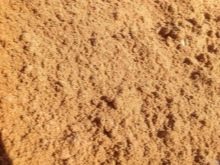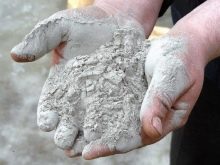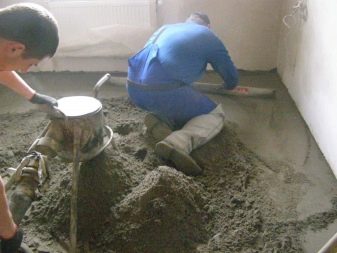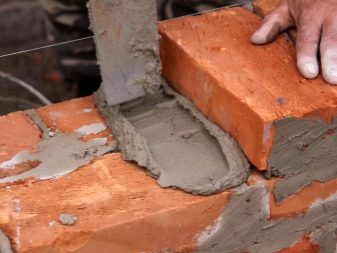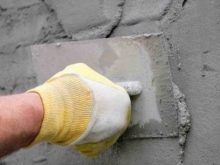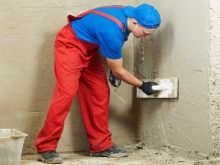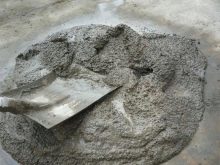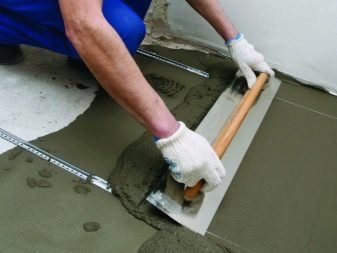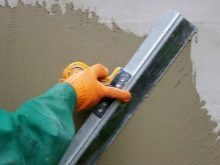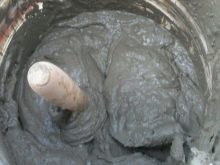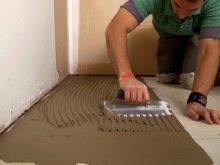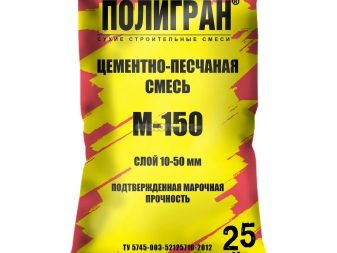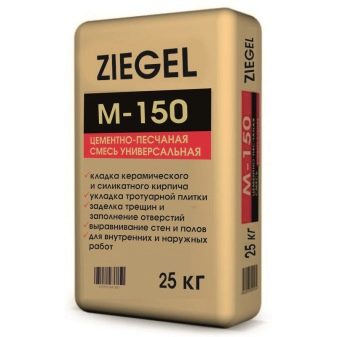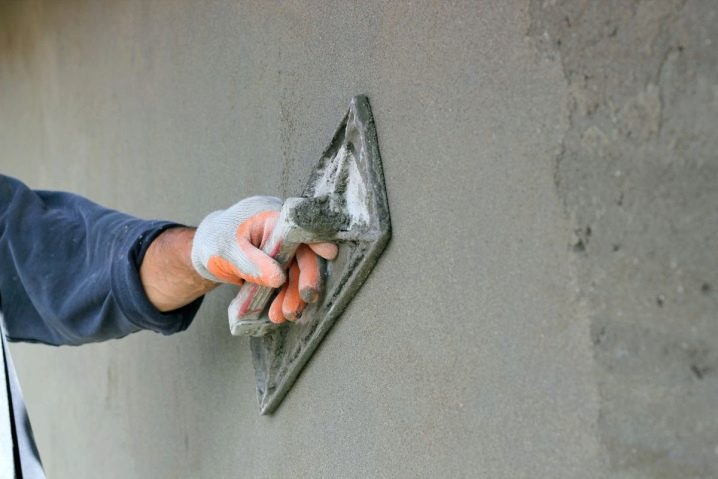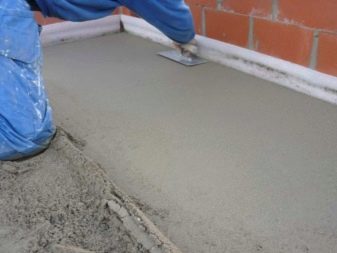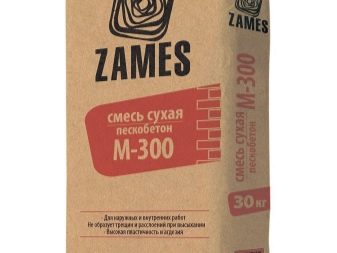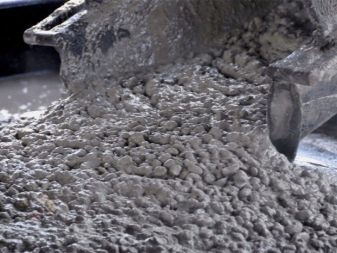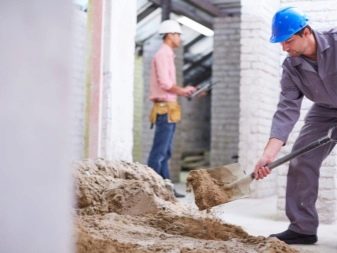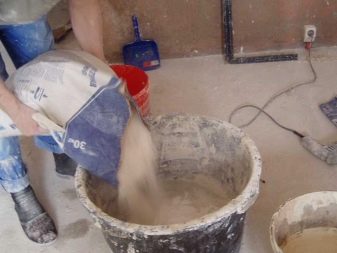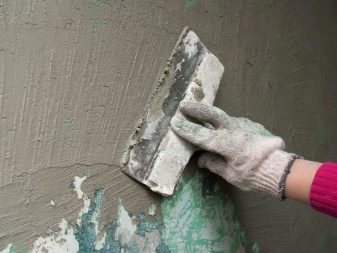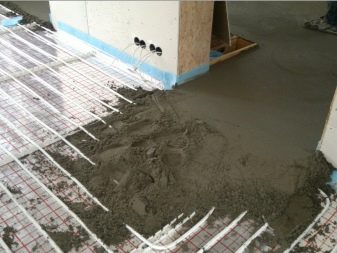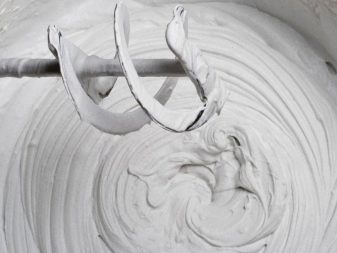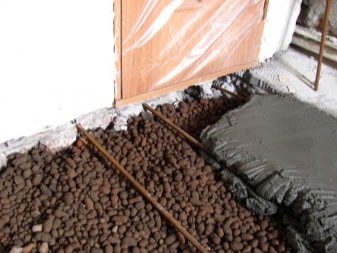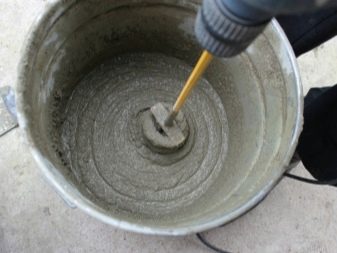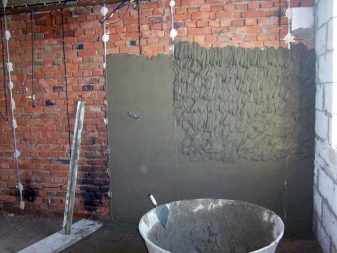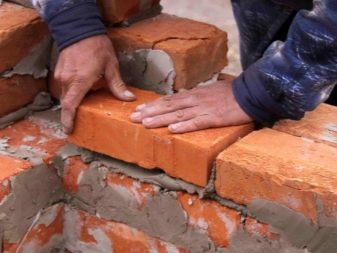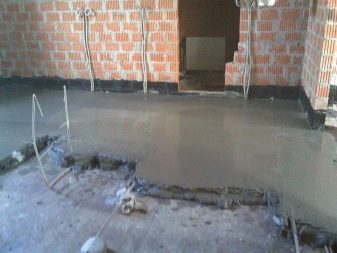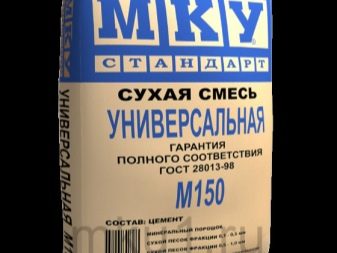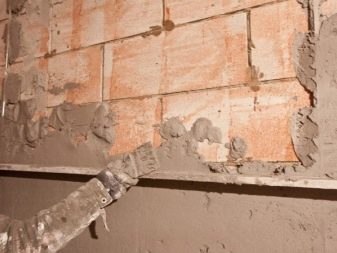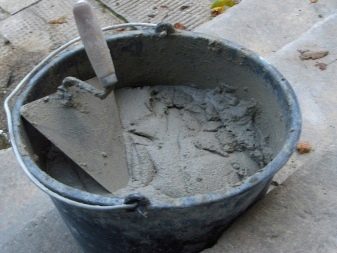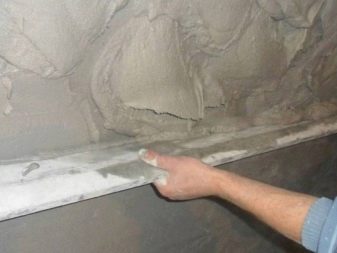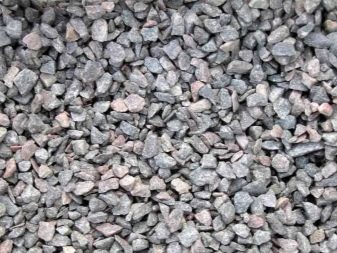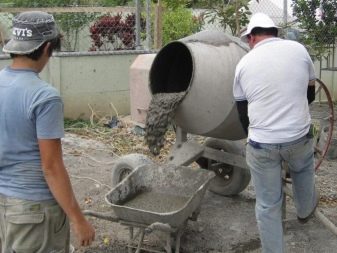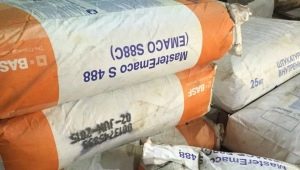Cement-sand mixture: features and specifications
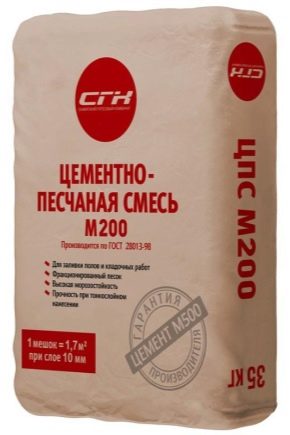
In the construction of any structure after the drafting of the project go to the selection of the necessary materials. In order to avoid cracks and other defects when laying, concreting and erecting walls, it is recommended to use dry cement-sand mixtures.
To save money, it is necessary to calculate the optimal amount of material in advance, for which the mixture consumption per 1 m² is calculated.
Special features
Sand-cement mixture is a dry building component, which contains an equal amount of cement and sand with the addition of various additives that improve the performance characteristics of the product. For example, they can increase the duration of hardening, wear resistance.
Each cement-sand mixture is labeled, for example, M300, where the figure indicates the maximum load that can withstand 1 cm³ of the finished mixture after curing.
According to the state standard GOST 28013 "Building mixes", the composition of building mixes includes:
- Portland cement sifted, without lumps. The optimum density of the cement mortar before solidification is no more than 25%. There is the possibility of mixing materials of different brands in terms of production. In some cases, the composition of the cement includes mineral additives that increase the performance characteristics of cement-sand mixtures up to 10%.
- Sand with fractional composition of 1-1.5 mm. The most commonly used river or career sand.
- Water in the composition should have a temperature of not less than 10 and not more than 30 degrees.
The use of cement-sand mixtures allows you to:
- reduce the number of operations to make the product complete;
- increase productivity due to improved performance properties of the finished material;
- improve the quality of construction;
- keep the composition for a long period even at sub-zero temperatures without changing its original characteristics.
Dry sand-cement mixtures provide the following advantages of the finished product:
- resistance to temperature extremes and frost;
- high strength;
- water resistant for use in aquarism;
- good adhesion with any surfaces (the ability of the solution to form strong compounds with various materials);
- resistance to high levels of humidity;
- long service life (even on the facade of the building they will last more than 20 years);
- Additional components contained in the composition of cement-sand mixtures that make the solution more reliable and of high quality;
- a wide range, so you can choose the optimal composition for construction.
Among the disadvantages of cement-sand mixtures, the following signs can be noted:
- Fast setting of the material. Because of it, it is recommended to prepare a solution in small quantities in order to use it until the cement begins to harden.
- Ready-to-use formulations are more expensive than the individual components in them.
- Self-preparation of the solution will be cheaper, but it will be time-consuming procedure. In addition, it is necessary to observe the exact proportions of the components in order to obtain an effective and high-quality mixture.
- This mixture has poor adhesion to wood and painted surfaces.
- It is difficult to work with viscous solutions because they are difficult to level.
It is not recommended to apply the material on a plaster base, as a very dense and heavy layer will damage or tear the gypsum.
Specifications
Cement-sand mixture has the following technical characteristics:
- Density is the main property on which the strength and thermal conductivity of the layer depends. In its pure form, cement-sand mixtures are quite heavy and have high density values. In the solid state, the density of the solution is 1500-1800 kg / m³.
- Heat conductivity allows to keep comfortable temperature indoors. This effect is unlikely to be achieved when using gypsum, which has a porous structure. Thermal conductivity of the DSP - 0.3 watts.
- Vapor permeability is very important for any finishing material, because without it, the room will be damp, which will lead to the appearance of mold and mildew. The permeability coefficient of the solutions is 0.09 mg / mchPa.
- Mobility indicates the ability of the sand-cement mixture to spread under its own weight and fill surface cracks.
Drying time depends on the thickness of the applied layer.The thicker it is, the longer it will dry. It is recommended not to touch the finished surface for one day in order to avoid damage to the freshly applied layer of cement-sand mortar.
If there are several dry mixes on the market of building materials with similar characteristics, it is necessary to compare the proportion of the two most important indicators: consumption and thickness. Most often, the consumption of more expensive mixtures in the end is much more economical.
Consumption, indicated by the manufacturer, is aimed at professional workers, so in fact this figure will be 10-15% more.
Kinds
Cement-sand compositions are classified into several varieties:
- M100 used in the preparation of sand-cement solutions. In addition to the main components, lime is added to the composition, due to which the percentage of cement is reduced. Therefore, this type has a low cost. M100 has been used for plastering, leveling surfaces, removing cracks, crevices and gouges.
- M150 - universal brand used in various technological works. It is great for plastering and masonry mortars.Also the acceptable price of such compositions affects their demand.
In everyday life, the M150 will easily replace any other sand-cement mortar.
M-150 has the following specifications:
- thickness of the applied layer - 5-50 mm;
- consumption - 17 kg per 1 m²;
- setting time - 2 hours;
- curing - 24 hours.
When buying, it is important to study the composition of the mixture of mark 150, as well as compliance with the requirements of frost resistance and layer thickness.
- M 200 made on a cement base. Cement-sand mixture M200 is available in several versions, each of which is intended for use in various conditions - the manufacture of masonry mix, plaster, for the foundation or screed. Quick-drying solution has high strength. The consumption per m² is about 8 kg.
- M300 or peskobeton has a high cost and narrow scope, compared with other types of mixtures. M300 is usually used in those types of work where structural strength is important: for masonry mixes when installing block structures, ground coating and installing screeds. For plastering solutions, this mixture is not suitable. Consumption per m² is about 20 kg.
- M400 used for supporting structures, foundations. The presence of plasticizers in the mixture of the M400 brand allows to increase the strength and density, as well as to increase the cement content in the composition.
Types of readiness
By readiness, the compositions are classified as follows:
- Dry cement-sand solutions produced at specialized enterprises in a dry form. They are required to be mixed with water or aqueous solutions of additives immediately before use.
- Ready Cement-Sand Mixtures Available in ready-to-use form.
Consumption
Consumption sand cement mixture depends on the thickness of the applied layer. Thus, for 1 m² of base with a layer thickness of 1 mm, up to 1.8 kg of mortar will be required, with a thickness of 2 mm, up to 3.5 kg, and for arranging a screed with a thickness of 100 mm, about 23 kg of mortar will be needed.
When screed floors, the flow rate of the mixture will be up to 21 kg / m². For the preparation of the solution used cement and sand in a volume ratio of 1 to 3.
At plastering of the basis 17 kg of material on 1 m ² will be spent. To prepare the mixture using a ratio of 1: 3.
The consumption of cement-sand mortar when laying walls is 0.05 m³.At the same time proportions reach 1: 3 and 1: 6.
To save cement-sand mortar, you can add additional components.
Consumption per m² will be less under certain conditions:
- adding lime mortar for plaster or increasing ductile properties;
- filling in the process of pouring the foundation and other structures with small loads;
- adding claydite to form a warm screed;
- the use of high-grade cement in the production of concrete (thanks to this, the content of the filler (gravel, rubble) can be increased).
Application area
Sand-cement mixtures are used in various branches of construction:
- For plastering walls and exterior works. In the process of producing mixtures for plaster, lime and plasticizers are introduced that can give the mixture specific properties.
It is very convenient to apply the finished solution with additives. Such structure is easily leveled and does not slip from the base.
Cement-sand mixture for plaster is prepared in the ratio of cement and sand 1 to 3, which is the most optimal proportion in construction. To increase the plasticity and adhesion of the solution, you can add a little lime or clay. You can buy ready-made mixes in the store if the amount of work is small.In this case, the solution will be more expensive several times than all the components separately.
- For masonry mortar. This mixture has the greatest strength. It can be prepared independently in the presence of cement brand M200. At sub-zero temperatures, special components are introduced into the mixture to provide frost resistance to the material. If the rubble is removed from the composition, then the ratio of cement and sand will be 1 to 3. At the same time, the volume of liquid to obtain the finished solution will be half the volume of cement.
To obtain a quality mixture for masonry, first mix sand and cement without adding liquid until uniform. Then just add water until the formation of the required thickness. Masonry mortar should not be liquid, otherwise its main part will simply drain from the surface, which will lead to waste of materials.
In that case, if the solution turns out to be too thick, it will quickly harden, and it will work very hard with this solution, since its adhesion ability will decrease significantly. For example, it will be difficult to fix bricks, leveling them up, you will have to put more effort.
- For floor screed. Screed is carried out with the aim of leveling the floor surface. Usually in multi-storey buildings it happens that one concrete slab for laying is laid slightly higher than the second one, as a result an unevenness forms at their junction.
The proportion for the preparation of the solution is the same as for the plaster. But the volume of liquid will be a little more, as the mixture is poured onto the floor, as a result, it is easier to observe the zero level of the floor surface. With an excess of water, cracking of the surface of the screed most often occurs. Creamy consistency - the most correct option.
The mixture can be prepared both independently and buy in the hardware store. At the plants, the fillers are usually introduced into the solution: fine fraction rubble or gravel. Thanks to these components, the coating acquires higher strength and low shrinkability.
Tips and tricks
Building mixture is sold in paper bags in volumes from 5 to 50 kg. The solution is prepared by diluting the mixture with water in the required ratios recommended by the manufacturer.
When choosing the optimal cement-sand mixture, it is necessary to adhere to some recommendations:
- When screed floors, the choice should be stopped on the mark M150. The ratio when adding Portland cement brand M500 - 1 to 3. To increase the strength, you can enter into the base fiber. The same proportions are chosen in the manufacture of peskobeton brand M300, only with the filler must be coarse-grained.
- By production of masonry solutions emphasis is placed on the use of high-quality components; various impurities in the sand must not be allowed. The proportions of components in the final solution depend on the type of building mixtures, they vary from 11: 3 to 1: 6. The consumption of rubble stone and cement is calculated from the ratio of 4 to 1.
- For mortars for finishing work more stringent requirements for plasticity and seizure. When applying the composition, it is important to take into account the layer thickness recommended by the manufacturer and apply the prepared solution as soon as possible to avoid the formation of solid fractions.
The best proportion in the preparation of cement-sand plaster - 1 to 3.
- The quality of cement-sand mixtures depends on binder and grain size of the filler substance. Mixes with low-aluminate cement are suitable for pouring screeds, with lime impurities - for plastering, with homogeneous fractions - for walls, with coarse-grained fillers - for concreting foundations. Many manufacturers specialize only in the release of DSP with a specific purpose. However, when all the conditions of mixing and installation are met, such mixtures easily turn into universal formulations that are optimal for both interior and exterior decoration.
When preparing the solution for 1 kg of the binder, 800-900 ml of water is taken. Failure to comply with this rule may decrease the strength of the compound and increase the hydration process, which usually does not exceed 4 weeks.
If necessary, the next stage of repair can be purchased in combination with plasticizers. However, their cost will be much higher.
- Selection of the connecting element. The basis of all cement-sand mixtures is cement, the quality of which depends on the strength of the concrete structure. Therefore, it is necessary to choose cement with high strength characteristics, that is, to pay special attention to the class and brand.The latter depends on the quality and ratio of all components of the mixture.
With long-term storage, cement binding capacity is greatly reduced. So, when stored for 6 months, cement binding properties decrease by 60%. As a result, the cement consumption in the mortar mix will be high.
- Use of placeholders. The most famous placeholder is sand. When choosing sand, it is necessary to pay attention to its fraction - it should be large enough. The use of such a filler will lead to the formation of cracks over the entire surface of the coating due to exposure to adverse ambient temperatures. This entails the premature destruction of the entire structure. Therefore, it is most efficient to use gravel or crushed stone as aggregates. Crushed stone need to choose two types of fractions: coarse (about 40 mm) and small (no more than 20 mm). This will allow you to tightly fill the voids with gravel material.
- Self-preparation solution. It is very important to prepare all the components before the start of the mixture. When using a concrete mixer, sand and cement are added to the liquid, and when mixing manually or using a nozzle drill, water is added to the dry concentrate,when this fluid is introduced in portions. The mixing of the finished factory mixtures occurs in a similar way.
Modifiers and colorants introduced into the solution should be in a powdery state, but there may be exceptions during the operation of the concrete mixer.
The resulting solution is left for some time, then it is thoroughly mixed. Approximately in 1 hour it is necessary to use all prepared volume of solution. Hardened composition is no longer possible to apply. It is also not recommended to mix the binder in advance with sand.
It is impossible to start finishing the surface finish earlier than 4 weeks after the application of the cement-sand mixture.. During this time it is necessary to ensure proper care of the surface: moisturize, protect from ultraviolet rays.
For information on how to work with the cement-sand mixture, see the following video.
